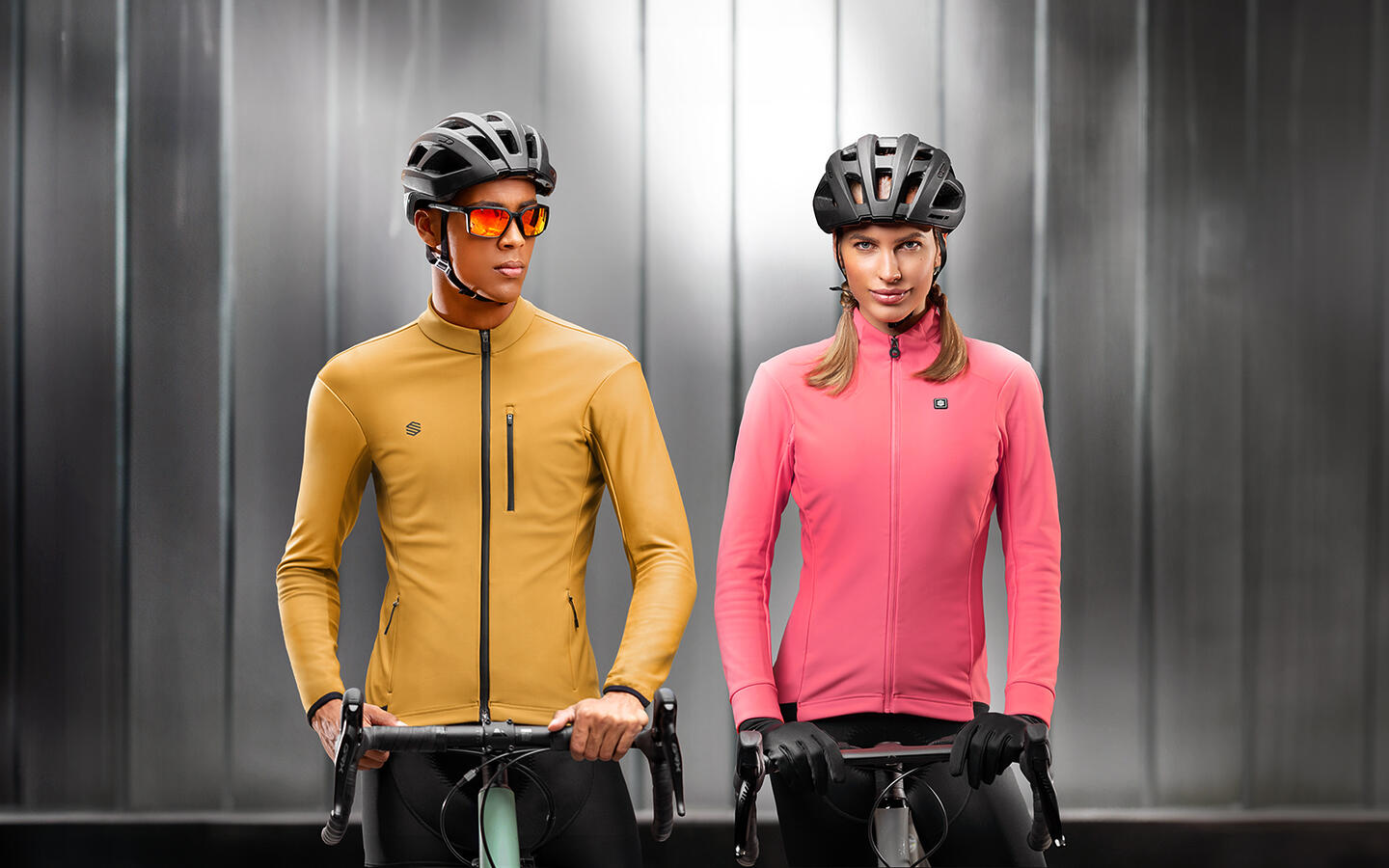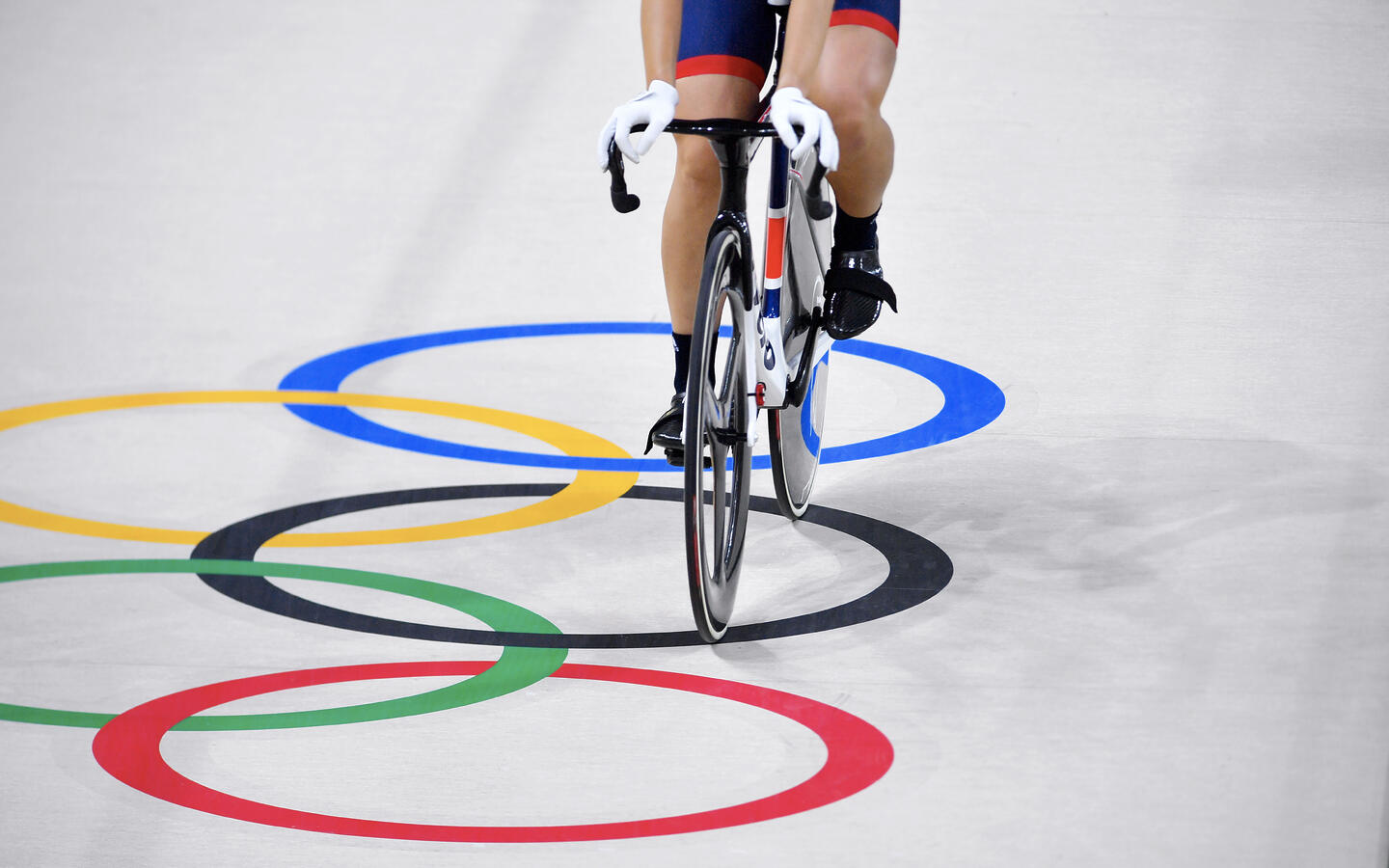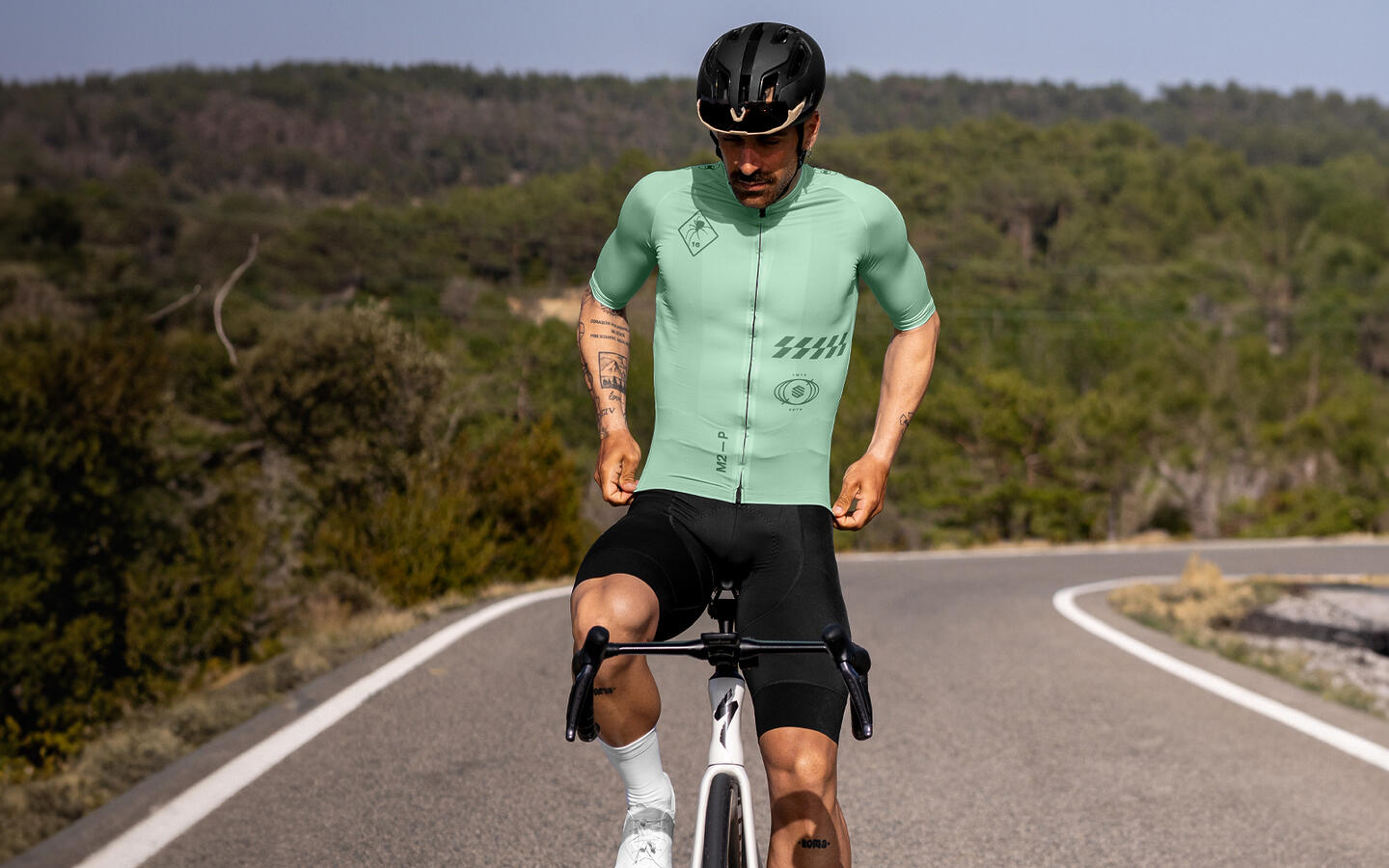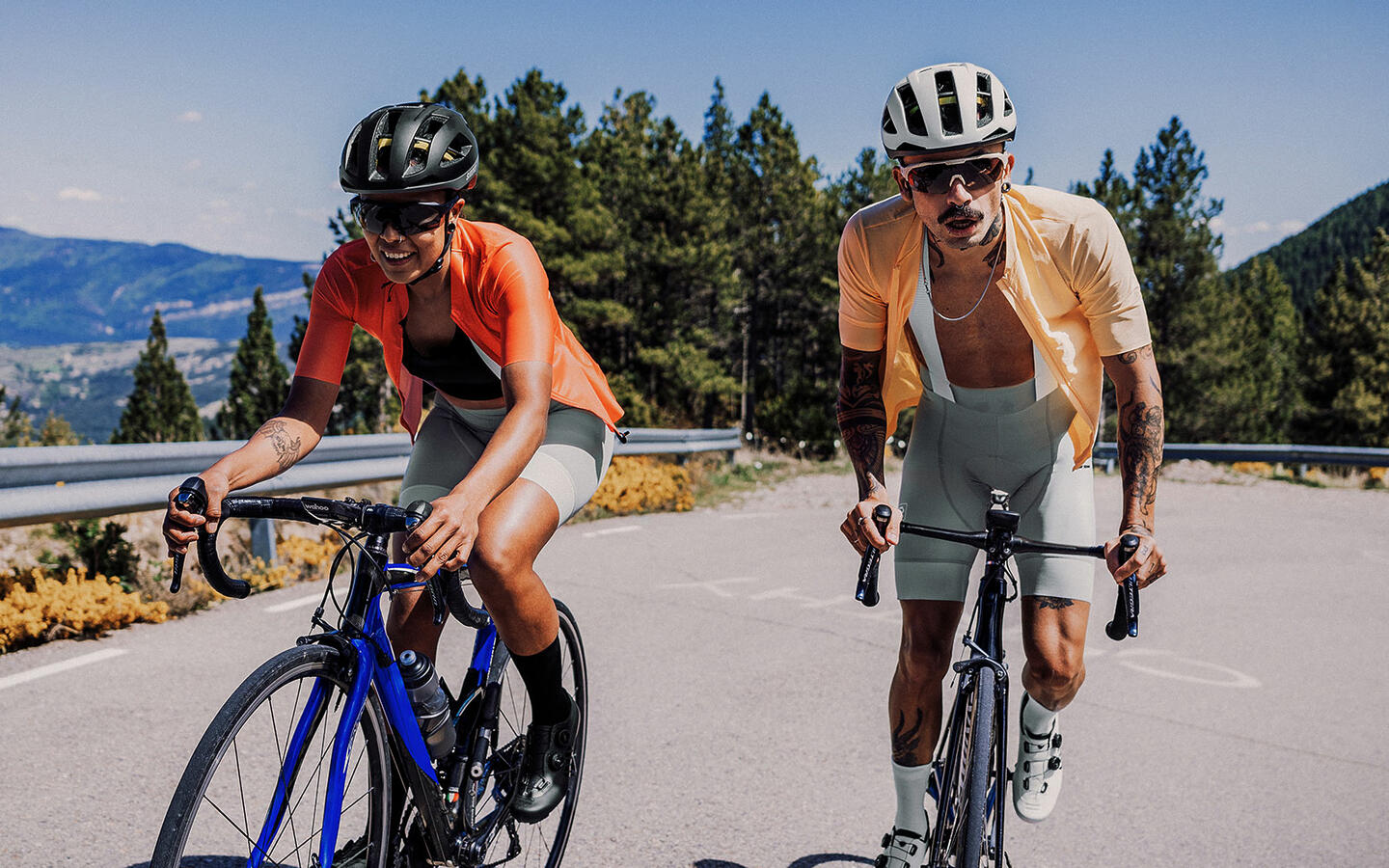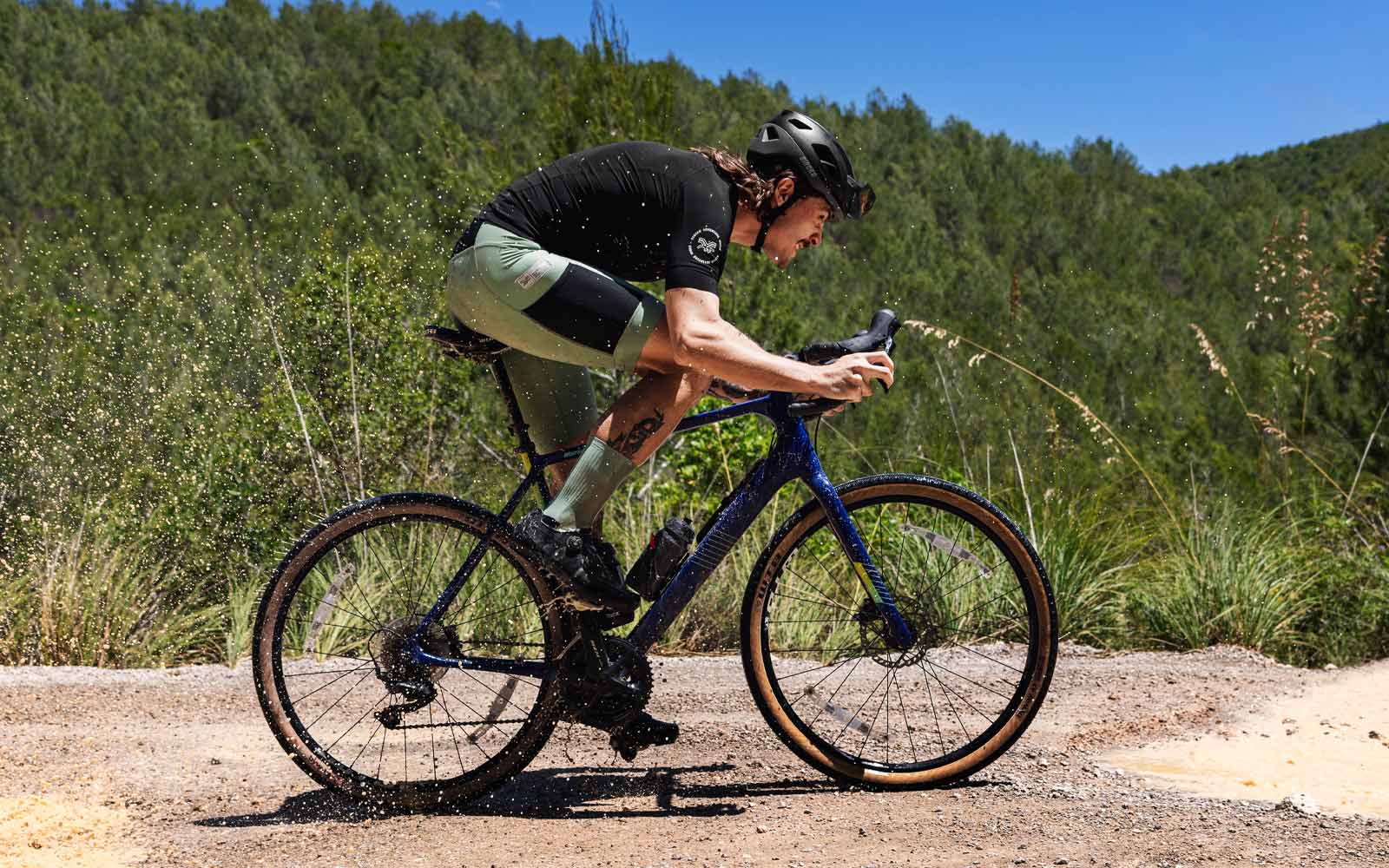Winter cycling jackets are key to keep you warm and protect you from adverse weather conditions while cycling on colder days. There are several models of such jackets available at Siroko: the most versatile choice, the J1 line, the premium option, our J3 range, and the waterproof rain jacket, our J2 line. These are three different models that share some of the features, but vary in detailing, technical specifications, style and design. Let us walk you through the specifics:
J1 Winter Cycling Jacket

Specific fit and designs for men and women.
Features:
- Three-layer softshell fabric.
- Outer layer: made of polyamide and elastane with water-repellent coating (DWR) up to 3,000 mm water column.
- Middle layer: TPU membrane that offers windproof protection and allows moisture wicking.
- Inner layer: polyester microfleece to retain body warmth and keep thermal comfort.
- Extra-large zipper pull for ease of use with gloves.
- Reflective detailing on the back.
- Men’s style: three rear pockets and laser-cut perforations on the underarms.
- Women’s style: dual-access rear pocket.
J3 Winter Cycling Jacket
Only men’s styles available. Premium jacket.
Features:
- 4-way stretch three-layer softshell fabric for more elasticity and a better fit.
- Outer layer: made of polyamide and elastane with water repellent coating (DWR) up to 5,000 mm water column.
- Middle layer: TPU membrane that offers windproof protection and allows moisture wicking.
- Inner layer: polyester and elastane microfleece to retain body heat; thanks to the flexibility of the elastane fabric, the jacket provides a better fit and allows for more ease of movement.
- Two-way zipper with extra-large pulls.
- Six pockets: one zippered front pocket on the chest and two zippered side pockets on the waist. In addition, the standard three rear pockets.
- Sleeves with elastic cuffs.
- Reflective detailing on chest and back.
J2 Cycling Rain Jacket
Specific styles for men and women are available. It can be used at any time of the year as its main features are water resistance, lightness and easy folding for storage in the pockets of the jersey or any of the previous jackets.

Features:
- Ultra-lightweight waterproof nylon fabric up to 10,000 mm water column.
- Sealed seams and zippers.
- Elastic cuffs.
- Specific design to adjust to the riding position: slightly longer sleeves, shorter front, and a drop tail to protect from splashing water.
- Adjustable elastic drawcord at the hem to keep the garment in place and provide optimal fit.
- Reflective detailing on chest and back.
- Laser-cut perforations on the underarms for improved air circulation.

What is important in a winter cycling jacket?
Here is a list of features and details you should look for when choosing a jacket for this winter:
Fabrics:
- Softshell: wind resistance and breathability.
- Polyamide and elastane: flexibility and water resistance.
- Microfleece: retains body heat, keeps thermal comfort.
Thermal protection and insulation:
- Waterproofing: look at the water column index (measured in mm) to determine the level of water resistance.
- Wind resistance: a windproof membrane is a must.
- Good insulation is vital for staying warm in cold temperatures.
Breathability:
- Look for jackets that wick away moisture to prevent overheating and sweat build-up.
Fit and Flexibility:
- Specific cut: some jackets have special designs for men and women.
- 4-way stretch: for greater elasticity and ease of movement.
- Ergonomic design: a jacket designed specifically for cycling and body position while riding is more comfortable, warmer and functional.
Other features:
- Reflective detailing: key for visibility in low light conditions.
- Storage space: decide how many pockets you need and where.
- Perforations for enhanced air circulation (i.e. on the armpit area) help regulate body temperature.
- Durable and water-resistant zippers. Large zipper pulls for easy use with gloves.
- Elastic cuffs and adjustable hems keep the jacket in place and prevent cold air from getting in.
How and when to wear a winter cycling jacket?
Wearing a jacket correctly and when it’s the right time to do so is just as important as choosing the one that best suits your needs. Here’s a little guide on how and when to wear a winter jacket:
- Base Layer: Before you put on your jacket, start with a base layer to wick away moisture, keep your skin dry and help you regulate your body temperature. Depending on the weather conditions and your own cold tolerance, you can choose among many different types of base layers.
- Right size and fit: Make sure the jacket is your size and fits your body properly. You should be able to move easily but make sure the jacket is not very loose fitting as it should keep out the wind and cold.
- Air circulation: If you start to feel too hot, use two-way zippers or ventilation zippers.
- Accessories: Combine your jacket with other winter accessories, such as gloves, skull caps and overshoes. Sometimes getting cold during the ride has nothing to do with the cycling jacket – it happens because we do not protect our feet, hands or head well enough.
- Temperature range: J1 and J3 jackets are designed for a temperature range between 0°C and 15°C, but everything depends on how cold you tend to get. So, if you feel cold and your thermal comfort level drops with your standard cycling apparel, it’s time to add a winter jacket.
- Cold wind: Sometimes the temperature is not even that low, but a strong wind can make you feel much colder on the bike. A jacket with a windproof membrane is essential in such conditions.
- Rain and humidity levels: For days with light rain and showers, the J1 and J3 models are enough, but for days of heavy rain or light but constant rain, you should choose a waterproof jacket such as the J2.
These are all general recommendations. Each cyclist, based on their own experience, knows what works best for the type of rides they usually do and the area where they live. Naturally, those who cycle in southern Europe will rarely need a winter jacket. In central and northern Europe, on the other hand, a winter jacket is a must, and on some days you will even need some extra protective base layer such as the SRX Denali, and an extra outer layer such as the J2 rain jacket or a thermal vest like the SRX Ultra Warm. You know, there’s no such thing as bad weather, only unsuitable clothing. And to be honest, sometimes it’s simply better to stay indoors and sweat it out on your indoor trainer or do some other type of activity that does not require going outside.
